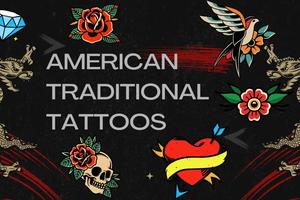Lauren Boebert’s Tattoo Controversy: ’90s Tribal Ink or Political Statement?

Key Takeaways
Essential insights to remember
Lauren Boebert’s beach photo showing her tribal tattoo sparked nationwide attention
The design resembles ’90s-style tribal ink, now seen as outdated or controversial
Conservative and liberal reactions highlight deeper cultural divides
Tattoo symbolism and cultural appropriation play a role in the debate
Similar tattoo trends have been criticized before — here's how Boebert’s fits in
Lauren Boebert’s name often trends for her controversial statements or fiery political antics, but this time it’s her body art—not her legislation—that has ignited debate across the internet. A bikini photo revealing a sprawling tribal tattoo on her right side, shared by Ginger Gaetz, wife of Florida Congressman Matt Gaetz, catapulted Boebert into the spotlight for an entirely different reason. The image became a flashpoint for political discourse, body autonomy, gender double standards, and the reemergence of outdated aesthetic trends.

The image, originally posted on X (formerly Twitter) by Ginger Gaetz, shows Lauren Boebert standing on a beach in a leopard-print bikini, confidently smiling at the camera. Her tattoo—a thorny, antler-like tribal design—stretches from her pelvic bone, across her right torso, and up to her ribs. The photo quickly went viral, trending in Google’s top 10 search topics by August 16, 2024.

This marked a rare instance where Boebert's personal image—rather than her political persona—drove national attention.
Tribal tattoos were a dominant style in the 1990s, often seen on bodybuilders, rock fans, and edgy suburbanites. Characterized by thick black lines and symmetrical, flame-like motifs, these tattoos were ubiquitous and, eventually, widely mocked.
Lauren Boebert's tattoo seems to replicate the older, less contextually aware version—evoking both nostalgia and ridicule.
Reactions to Boebert’s tattoo ranged from admiration to outright insult. While some praised her confidence and physique, others didn’t hold back their distaste.
🔵 X Users Reacted:

Yet, Boebert’s core base celebrated her “patriotism and strength,” turning the moment into a bizarre yet potent mix of thirst trap and political branding.
📌 Also read: Tattoo on Boobs — How society perceives tattoos on different parts of the body.
Critics pointed to a perceived contradiction: a Christian conservative posing in a bikini with a tribal tattoo. Detractors accused her of hypocrisy, while defenders argued that confidence and faith aren’t mutually exclusive.
🔺 Double Standards Noted:
Though still rare, tattoos among elected officials are no longer taboo. Some use them for personal expression, others for symbolic representation. For Boebert, the tattoo could be seen as a relic of youth—or a deliberate identity marker.
🔍 Notable Inked Politicians:
Tribal tattoos stem from Indigenous cultures like Polynesian, Samoan, and Native American traditions. Inking without understanding their spiritual meaning is widely criticized as cultural appropriation.
⚠️ Red Flags:
- No acknowledgment of heritage or meaning
- Aesthetic mimicking without cultural context
- Part of a broader trend of appropriation in the ’90s tattoo scene
📌 Also read: San Judas Tadeo Tattoo — Exploring cultural and spiritual significance in tattoo art.
Ironically, tribal tattoos are experiencing a mini-revival, particularly among Gen Z. But this time, artists emphasize authenticity and connection to heritage.
🎨 Expert Tattooist Quote:
“““It’s not about the look—it’s about the lineage. Today’s tribal work must honor its origins.”
Boebert may be accidentally on trend, but her ink doesn’t seem to share the modern cultural mindfulness.
📌 Also read: $100 Tattoo Guide — How price can affect quality, longevity, and regret.
Tattoos, unlike tweets, are permanent. When they become the center of controversy, managing public image becomes more difficult.
Lauren Boebert’s tattoo has added a new layer to her political brand—one marked by rebellion, flash, and cultural tension. Whether viewed as a badge of confidence or a lapse in taste, it has undeniably redefined how the public sees her. As tribal ink creeps back into the mainstream, Boebert’s body art poses a bigger question: In a world where image is everything, who gets to decide what’s appropriate—and who gets to flaunt it?





